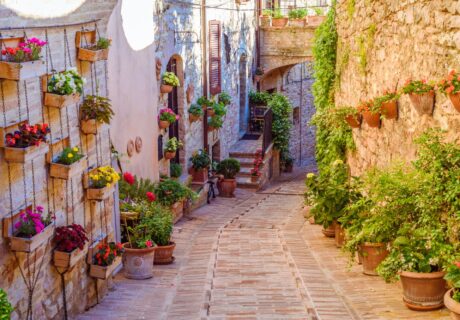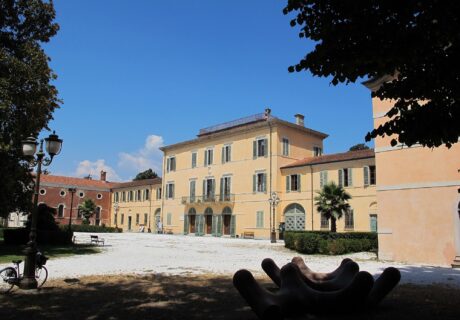What to see in Camaiore
4 min · 30 May 2023

Positioned in the heart of Versilia, Camaiore is a delightful town that stands out for the beauty and extraordinary variety of its landscapes: from the fascinating peaks of the Apuan Alps to the medieval historic centre, up to the very famous beaches of Lido di Camaiore, one of the main seaside resorts in Italy. Of ancient origins, it preserves numerous historical, artistic and architectural treasures just waiting to be discovered.
What to see in Camaiore? We have selected for you the places and attractions not to be missed!
Strolling through its characteristic historical centre, one can admire a large number of buildings from different eras that bear witness to its interesting history. One of the most important and famous is the Collegiate Church of Santa Maria Assunta, with its beautiful Romanesque bell tower. The town’s main place of worship, it was founded in 1278 and despite the transformations it has undergone over the years, it has maintained its 13th-century structure. Inside are valuable works of art such as: the painting of the Annunciation by Stefano Tofanelli, dating back to 1805; a 14th-century wooden Crucifix of particular beauty; and four canvases by Benedetto Brandimarte, a 16th-century Lucchese painter.
The historical centre is also embellished by numerous palazzos, including: the Palazzo del Vicario, built in the 14th century; the Palazzo del Municipio, with its three-storey façade; and the Palazzo Tori-Massoni, a refined building inspired by the models of the Civitali school, which houses the Civico Museo Archeologico, illustrating the archaeological evidence of the territory from Prehistory to the Renaissance. The 17th-century Confraternita del Santissimo Sacramento (Confraternity of the Holy Sacrament) houses the Museum of Sacred Art, which houses a large collection of sculptures, paintings, goldsmithery and sacred furnishings from local churches, including the well-known Vergine Annunciata by Matteo Civitali. Also definitely worth a visit is the Olive Tree Theatre, one of the oldest in Tuscany, dating back to the mid 17th century, although it has recently been renovated.
Another religious building of considerable interest is the Badia of San Pietro, whose importance is due to its monumentality. Situated on the edge of the ancient Via Francigena, it was founded in the Longobard era by the Benedictine monks of St. Columbanus and despite having undergone numerous interventions and modifications, it has retained its medieval structure. Worthy of note inside are the two frescoes on the first and second columns of the left aisle depicting St. Mary of Egypt and Our Lady of Pity, respectively, and the tabernacle and stoup from the 15th century. Other religious architecture includes: the Parish Church of St. Stephen and St. John the Baptist, in the Lucchese-Romanesque style, whose current structure dates back to the 12th century; the Church of the Immaculate Conception and St. Lazarus, built in the early 17th century; and the Church of St. Michael, rebuilt after World War II in its original Romanesque form.
The territory of Camaiore in medieval times was dotted with castles and fortifications, of which unfortunately only a few ruins remain today. Among the most important are: the Castle of Montecastrese, which stands on a hill near the small village of Lombrici and of which only parts of the walls and a quadrangular tower remain; and the Castle of Montemagno, of which only parts of the walls and the façade of the small church of San Bartolomeo have survived.








